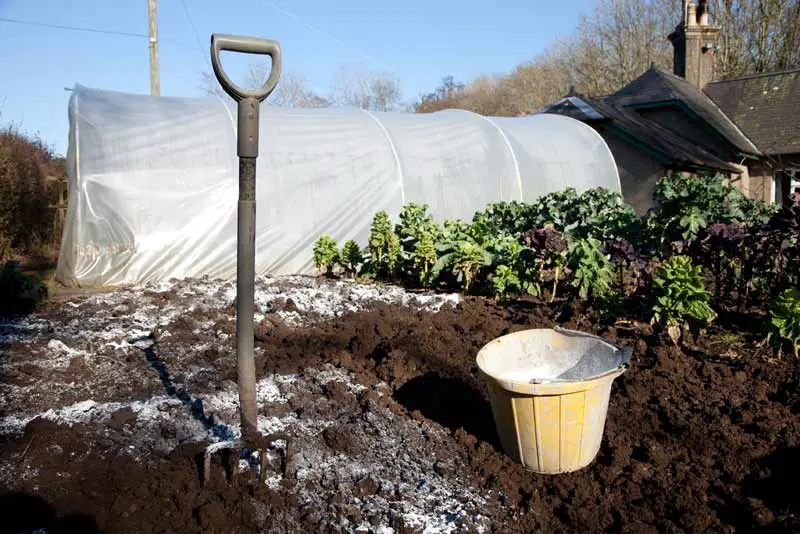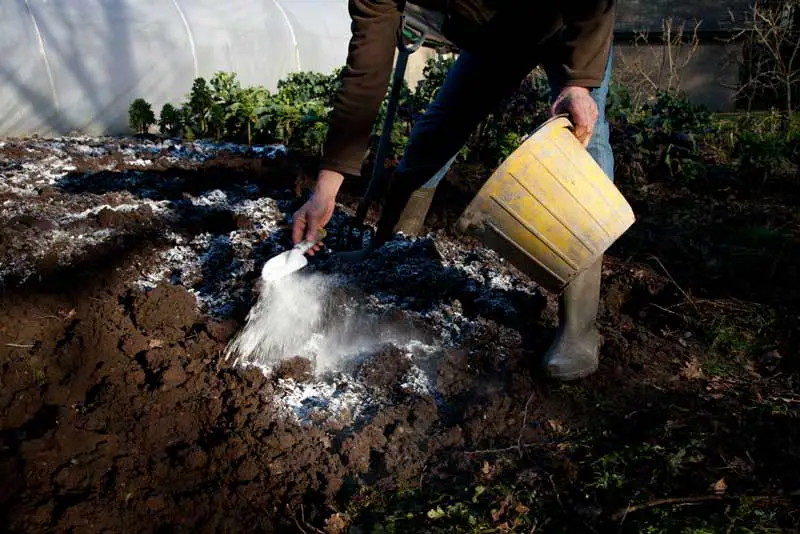
When it comes to gardening, one of the most important factors to consider is soil health. Soil acidity is a common problem that can affect plant growth and yield. Lime is a commonly used soil amendment that can help to neutralise soil acidity and improve soil health. However, there is some debate about whether lime harms soil in the long run.
Some people argue that too much lime can harm soil health by disrupting the balance of nutrients and altering the pH too much. Others argue that lime is a necessary tool for maintaining healthy soil and that it can be used safely as long as it is applied correctly.
This article will explore whether lime is harmful to soil and provide some insights into using lime effectively in your garden.
The Effects of Lime on Soil
Lime is a commonly used soil amendment that can positively and negatively affect soil health. Understanding the effects of lime on soil is important for farmers, gardeners, and anyone working with soil. This section will explore lime’s positive and negative effects on soil.
Positive Effects of Lime
Lime can have several positive effects on soil health, including:
-
- Increasing soil pH: Lime is an alkaline substance that can increase soil pH, making it less acidic. This can improve soil structure, nutrient availability, and plant growth.
-
- Improving soil structure: Lime can help to break up heavy clay soils, increasing pore space and improving drainage.
-
- Increasing nutrient availability: Lime can improve the availability of nutrients such as nitrogen, phosphorus, and potassium, making them more accessible to plants.
Negative Effects of Lime
While lime can have several positive effects on soil health, it can also have some negative effects, including:
-
- Altering nutrient balance: Lime can alter the balance of nutrients in the soil, making some nutrients more available while decreasing the availability of others. This can lead to nutrient imbalances and deficiencies in plants.
-
- Reducing soil acidity: While reducing soil acidity can be a positive effect of lime, it can also have negative consequences. Overly alkaline soil will cause more harm than good. Some plants, such as blueberries and rhododendrons, require acidic soil to grow properly.
-
- Increasing risk of heavy metal toxicity: In some cases, adding lime to soil can increase the risk of heavy metal toxicity. This is because lime can increase the availability of heavy metals, which can harm plants and animals.
Overall, the effects of lime on soil can be both positive and negative. It is important to consider the specific needs of your plants and soil before adding lime and to use it in moderation to avoid negative consequences.
Related article: Benefits of Adding Lime to Soil: Improve Soil Health and More
The Best Type of Lime For Soil
Gardeners have two main options for choosing the best type of lime for their soil. These are agricultural lime and dolomite lime. Both types of lime contain calcium in the form of calcium carbonate, which is essential for plant growth. Dolomite lime also contains magnesium, which is another important nutrient for plants.
The choice between agricultural lime and dolomite lime depends on the specific needs of your soil. Agricultural lime is best for acidic soils, with a pH level below 6.5. It is made from ground limestone rock and is also known as calcitic lime. Dolomitic lime is best for soils that are low in magnesium and acidic soils. It is made from dolomitic limestone rock.
It is important to note that adding too much lime to your soil can be harmful to plants. The ideal pH level for most plants is between 6.0 and 7.0. Adding too much lime can raise the pH level above this range, making it difficult for plants to absorb nutrients. Therefore, it is important to test your soil before adding lime and to follow the recommended application rates.
As a third bonus option, builder’s hydrated lime can also be used in the garden. It contains calcium carbonate like the other limes but is more potent, so less will be required. This type of lime is caustic and can cause skin, eye and lung irritation. So take care if you decide to use it, and ensure you don’t confuse it with calcium oxide (quicklime), which is very caustic and very reactive with water. It is not suitable for use as a garden lime.

Related article: Builders Lime vs Garden Lime: What Are The Key Differences
Factors Affecting Lime’s Impact on Soil
Soil Type
The type of soil determines how lime affects it. Soils with high clay content require more lime than sandy soils to achieve the desired pH level. Clay soils have a higher buffering capacity, so more lime is required to change the pH value. Sandy soils, therefore, require significantly lower amounts of lime to change the pH.
Soils with high organic matter also require more lime because organic matter releases acids as they decompose, increasing the overall soil acidity. Lime reacts with the acid to help neutralise the soil. In contrast, soils with low organic matter content require less lime because they have fewer acids produced by decomposition to neutralise.
Climate
Climate affects how quickly lime reacts with soil. In regions with high rainfall, lime dissolves and moves through the soil profile more quickly than in regions with low rainfall. This means that in wet climates, lime needs to be applied more frequently to maintain the desired pH level. In contrast, in dry climates, lime can last longer in the soil, reducing the need for frequent applications.
Application Rate
The amount of lime applied affects its impact on the soil. Applying too little lime will not neutralise the soil’s acidity, while applying too much can lead to over-liming, which can cause soil alkalinity.
The ideal application rate depends on the soil’s pH level, the desired pH level, and the soil’s buffering capacity. The buffering capacity is the soil’s ability to resist changes in pH. Soils with high buffering capacity require more lime to achieve the desired pH level than soils with low buffering capacity.
Generally, if the soil is a pH of 5.5 or lower, it is considered acidic.
Application Frequency
The frequency of lime application depends on the soil’s pH level and the desired pH level. Soils with a pH level below the desired pH level require more frequent applications than soils with a pH level closer to the desired pH level.
The frequency of lime application also depends on the crop’s requirements. Some crops, such as legumes, require a higher pH level than others, meaning they require more frequent lime applications. In contrast, some plants, like carrots, prefer slightly more acidic conditions.
Regular soil pH testing is the best way to ensure your soil is at the correct pH for the plants and vegetables you intend to grow. Checking soil and liming before planting or seeding is best; this is usually late winter to spring. This will give the soil enough time to react with the lime and neutralise the acidity fully.
Conclusion
After reviewing the available information, it can be concluded that lime is not harmful to the soil when used correctly. In fact, it can be a useful tool for managing soil acidity and improving crop production.
However, it is important to note that the effectiveness of lime can vary depending on several factors, such as soil type, climate, and crop type. It is recommended to consult with a soil expert or conduct soil tests to determine the appropriate amount and type of lime to use for your specific situation.
Additionally, it is important to follow proper application techniques to avoid over-liming, which can lead to negative effects such as reduced nutrient availability and soil compaction. It is also important to consider the environmental impact of lime use, as excessive use can contribute to water pollution and other environmental issues.
Overall, while lime can be a useful tool for managing soil acidity, it should be used with caution and in conjunction with other soil management practices to ensure optimal soil health and environmental sustainability.

